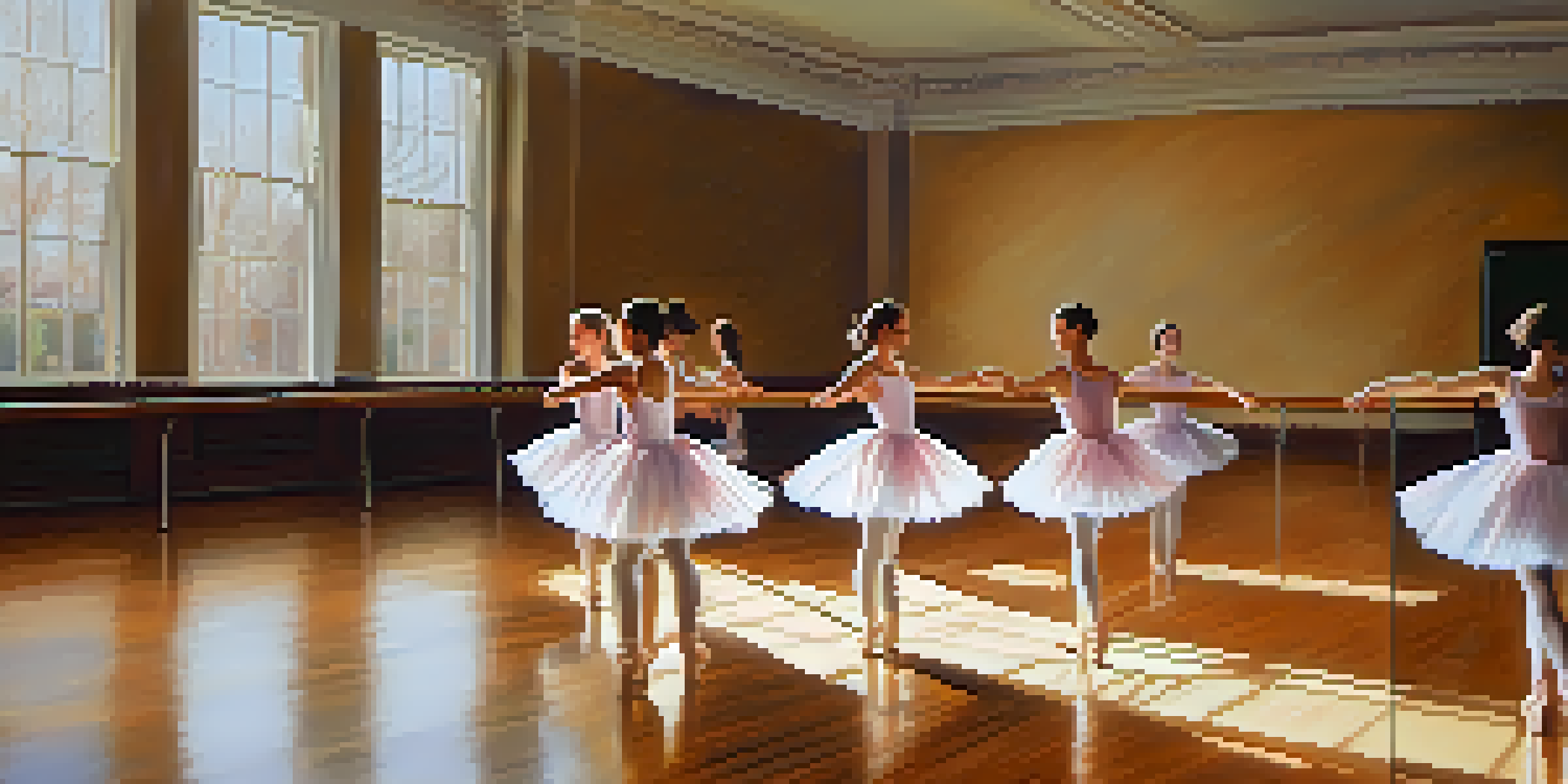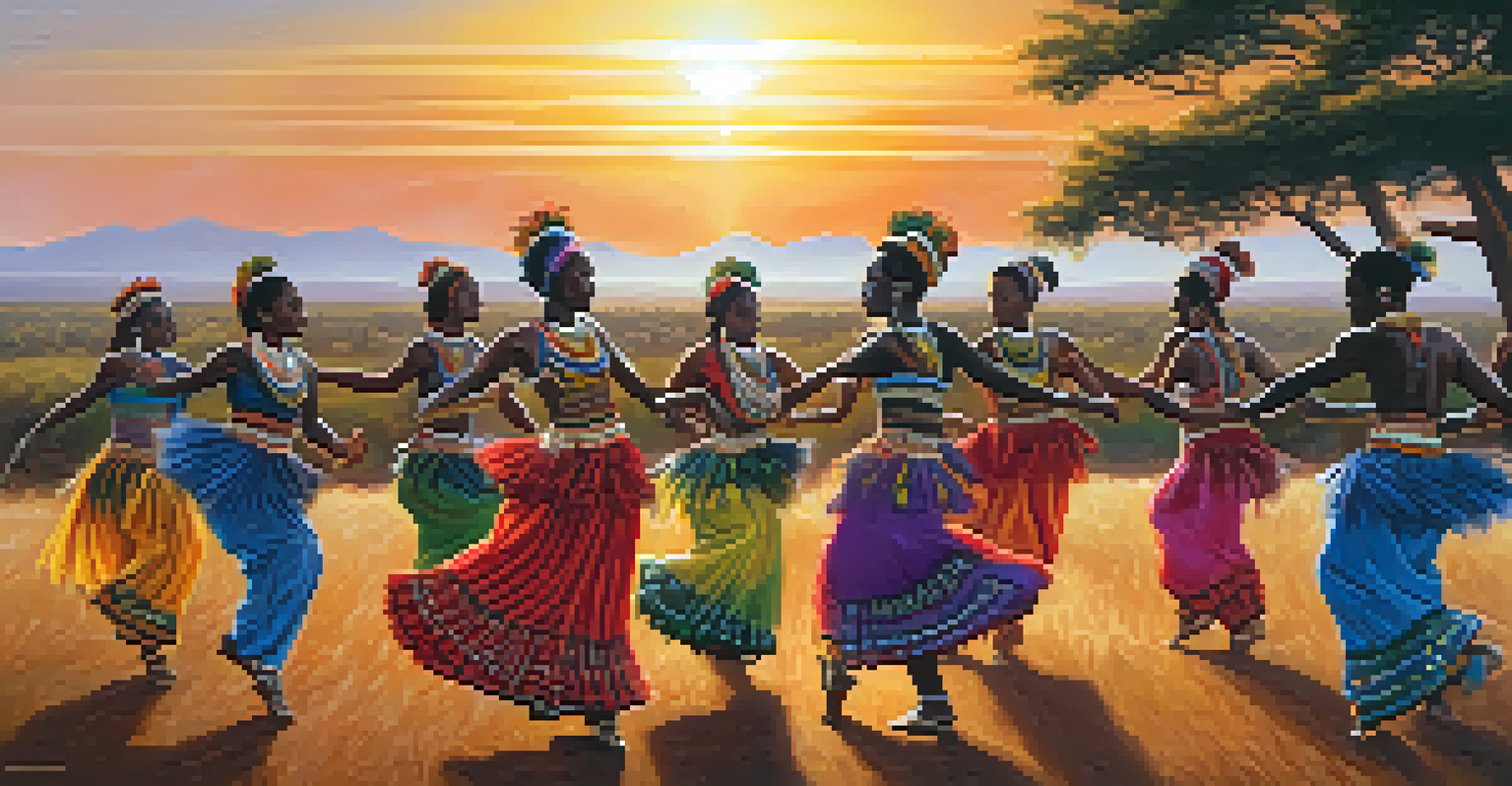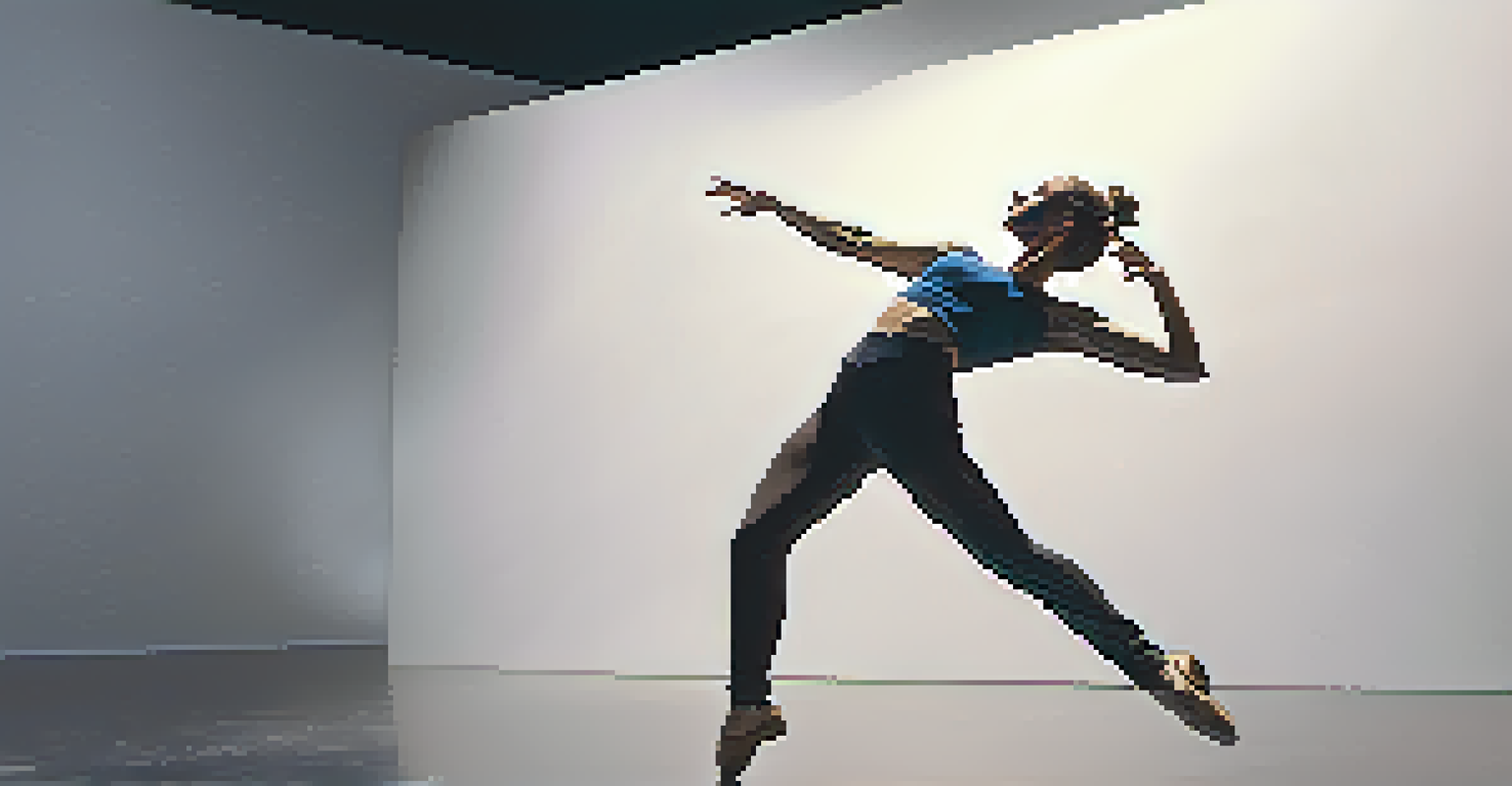Exploring the Impact of Historical Dances on Contemporary Choreography

The Roots of Dance: A Historical Overview
Dance has been an integral part of human culture for centuries, serving as a means of expression, celebration, and communication. From ancient rituals to royal courts, historical dances reflect the values and social dynamics of their times. These early forms of dance laid the groundwork for the diverse styles we see today.
Dance is the hidden language of the soul.
By examining dances like the waltz, tango, and ballet, we can trace the evolution of movement and technique over the years. Each style carries with it stories of the times, influencing how contemporary dancers approach choreography. Understanding these roots helps us appreciate the depth and richness of dance as an art form.
Moreover, historical dances often introduce specific movements and rhythms that modern choreographers reinterpret. This connection between past and present creates a dialogue within the dance community, ensuring that the legacy of historical dances continues to thrive.
Cultural Influences on Dance Evolution
Cultural influences play a significant role in shaping dance styles around the world. For instance, the African diaspora has greatly impacted contemporary forms like hip-hop, which often incorporate traditional African rhythms and movements. This blending of cultures creates a vibrant tapestry in the world of dance.

Similarly, the influence of Eastern dance forms, such as Bharatanatyam and Kathak, can be seen in contemporary ballet and modern dance. Choreographers often draw inspiration from these traditional styles, merging them with their unique voices to create innovative performances. This cross-pollination enriches the dance landscape, allowing for greater creativity and expression.
Dance Reflects Cultural Evolution
Dance styles evolve through cultural influences, blending traditional elements with contemporary expression.
As we explore these cultural connections, it becomes clear that contemporary choreography is not created in a vacuum. Instead, it is a reflection of the diverse influences that have shaped its development over time, echoing the legacy of historical dances.
Technique and Training: Learning from the Past
The technical aspects of dance have evolved significantly, but many foundational techniques stem from historical practices. For example, ballet's rigorous training methods have influenced how dancers of various styles approach their craft. This structured training provides a strong foundation that helps dancers execute complex movements with grace and precision.
To watch us dance is to hear our hearts speak.
Moreover, many modern dance schools incorporate historical dance techniques into their curriculum. This not only preserves the art form but also equips students with a diverse set of skills. By understanding the techniques of the past, dancers can innovate and experiment with new styles, pushing the boundaries of what is possible.
As a result, the impact of historical dances on contemporary choreography is evident in both performance and training. Dancers today benefit from the wisdom of those who came before them, allowing for a richer and more dynamic dance experience.
Storytelling Through Dance: A Timeless Tradition
Storytelling is a powerful element of dance that has been present since ancient times. Historical dances often conveyed narratives, whether through the movements themselves or the accompanying music and costumes. This tradition continues in contemporary choreography, where narrative-driven performances captivate audiences.
Choreographers like Martha Graham and Alvin Ailey have masterfully woven storytelling into their work, drawing inspiration from historical themes and personal experiences. By blending movement with narrative, they create a profound emotional impact that resonates with viewers. This approach highlights the timeless connection between dance and storytelling.
Historical Techniques Shape Today
Modern dance training often incorporates historical techniques, enriching dancers' skills and creativity.
Furthermore, modern choreographers often look to historical narratives for inspiration, adapting them to reflect contemporary issues. This not only honors the past but also brings relevant themes to light, showcasing the adaptability of dance as a medium for expression.
The Revival of Historical Dance Forms
In recent years, there has been a resurgence of interest in historical dance forms, with many choreographers and dance companies revisiting these styles. This revival not only celebrates the rich heritage of dance but also provides a fresh perspective on movement. By reinterpreting historical dances, artists can explore new creative avenues.
Workshops and performances dedicated to historical dance have gained popularity, allowing dancers to immerse themselves in different styles. This hands-on experience fosters a deeper understanding of the techniques and cultural context behind each dance form. As a result, the revival contributes to a more diverse and inclusive dance community.
Moreover, this trend encourages a dialogue between past and present, where contemporary dancers can learn from historical practices while expressing their individuality. The revival of historical dance forms serves as a reminder that the past continues to influence and inspire the present.
Dance as a Reflection of Social Change
Dance has always been a reflection of societal values, and historical dances often respond to the social movements of their times. For instance, the emergence of jazz and swing dance in the early 20th century symbolized a break from tradition and a celebration of freedom. Today, contemporary choreography often mirrors current social issues, using dance as a medium for activism.
Choreographers are increasingly addressing themes like identity, equality, and environmental concerns through their work. This trend highlights how dance can serve as a powerful tool for social commentary, echoing the ways historical dances responded to their cultural contexts. By drawing from the past, contemporary dance can engage with pressing issues in innovative ways.
Dance as Social Commentary
Contemporary choreography serves as a powerful medium for addressing current social issues, echoing the historical context of dance.
As we witness these social changes unfold, it becomes clear that dance remains a vital form of expression. The relationship between historical and contemporary dance reflects an ongoing dialogue about our collective experiences and aspirations.
The Future of Dance: Blending Old and New
As we look to the future of dance, it’s evident that the blending of historical and contemporary styles will continue to shape the art form. Choreographers are increasingly experimenting with fusion techniques, creating hybrid styles that honor both tradition and innovation. This experimentation keeps the dance world vibrant and dynamic.
Technology also plays a role in this evolution, with digital platforms allowing dancers to share their interpretations of historical dances. This accessibility fosters a global community where diverse voices can contribute to the conversation. As a result, the future of dance is characterized by collaboration and cross-cultural exchange.

Ultimately, the ongoing interplay between historical dances and contemporary choreography ensures that the art form remains relevant and engaging. By embracing the past while looking to the future, dance continues to evolve, captivating audiences for generations to come.